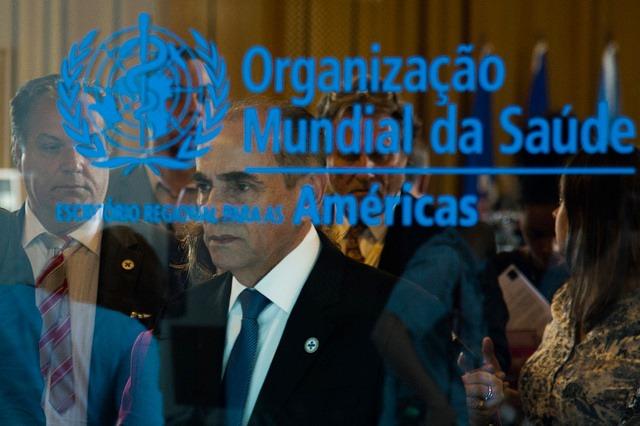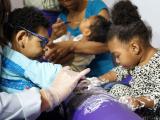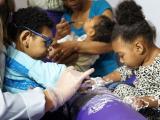Zika outbreak response developments continue at a rapid pace, with the release today of blood safety guidance from the World Health Organization (WHO), along with updates on vector control and research and development.
Also, US health officials shared new guidance regarding babies and children with acute infections, and clinicians raised concerns about the safety and usefulness of amniocentesis in potentially exposed pregnant women.
At a media briefing in Geneva today, Bruce Aylward, MD, MPH, the WHO's assistant director-general, said there's no evidence that Zika virus activity in the Americas has peaked.
He told reporters that over the next 4 to 6 months health officials will know with more certainty how strong the link is between the Zika virus and microcephaly, based on how the outbreaks enfolds in Colombia and other countries affected after Brazil. A spike in microcephaly cases in Colombia starting in June will provide strong evidence of a link between the two, he said.
Next steps with WHO response
Aylward said experts will meet in Geneva March 7 to 9 to forge a research agenda to help answer the many unanswered questions about the disease and its possible complications and to put together a research and development roadmap for vaccines, therapeutics, and diagnostic tests.
The WHO today released interim guidance on maintaining safe and adequate blood supplies during Zika outbreaks, and Aylward said WHO currently has 12 other guidance documents in the pipeline.
Aylward said he and WHO Director-General Margaret Chan, MD, MPH, will travel to Brazil next week to more closely assess the situation.
Meanwhile, Pedro Alonso, MD, PhD, director of the WHO's global malaria program, said the organization has mobilized its internal vector control capacities and is about to launch emergency guidelines for vector control. He also added that an external advisory group will meet soon to discuss the new mosquito control technologies—such as Wolbachia bacteria or release of transgenic or sterile male mosquitoes—and if any can be fast-tracked.
"We're not waiting for a magic bullet with the new technologies," he said. "But a lot can be done with the currently available tools."
Clinical updates on children, pregnant women
The US Centers for Disease Control and Prevention (CDC) today updated its interim guidance for health providers caring for infants and children through age 17 with possible Zika virus infection. The advisory was published in an early online edition of Morbidity and Mortality Weekly Report (MMWR).
The main change is the addition of advice for routine care of babies born to mothers who traveled to or lived in Zika-affected areas and who don't have signs of microcephaly on physical exam.
The CDC notes that Zika infections can be passed from mother to child during delivery, and its guidance today walks clinicians through what to watch for in the 2 weeks after birth for babies whose mothers traveled to or lived in affected regions in the 2 weeks before delivery. It said Zika illness in children is usually mild, with symptoms that include fever, rash, conjunctivitis, or arthralgia.
If an infant shows signs of disease, both mother and child should be tested, the CDC said. Treatment for children includes supportive care, and for prevention, Environmental Protection Agency–registered repellents can be used according to label directions on babies 2 months and older.
Meanwhile, a Swiss-based group yesterday raised concerns about earlier CDC guidance on the care of pregnant women exposed to Zika virus. In a letter to The Lancet, they called into question the recommendation to offer amniocentesis as early as 15 weeks to women who traveled to or lived in a Zika-affected country and whose blood tests were positive or inconclusive for the virus.
They noted that cross-reactions with other flaviviruses could lead to unnecessary amniocentesis procedures and miscarriage risks, and they pointed out that the sensitivity of molecular detection of Zika virus in amniotic fluid isn't known, but the virus isn't likely to be shed in the fluid until after 18 to 21 weeks gestation.
The team suggested that the procedure be offered only when fetal signs are present or 6 to 8 weeks after suspected maternal exposure, and not earlier than 21 weeks' gestation.
Geographic spread, US funding
- Trinidad and Tobago's health ministry on Feb 17 announced its first lab-confirmed Zika virus infection, in a 61-year-old woman who had recently traveled to New Zealand. It said because New Zealand is free of the virus, the case is probably locally acquired and the investigation is continuing. If local transmission is confirmed, Trinidad and Tobago would be the 29th nation or territory in the Americas to be affected by the disease.
- A group from the House Appropriations Committee sent a letter yesterday to the Office of Management and Budget asking the Obama administration to consider using unobligated funds, including those earmarked for the Ebola outbreak, to be used to address the Zika virus response. The administration has requested $1.8 billion for the response. In a statement for House Appropriations Chairman Hal Rogers, R-Ky., the group said that, as of the end of 2015, $1.4 billion in Health and Human Services funding for Ebola hadn't been obligated and $1.3 billion in Ebola funding within the US Agency for International Development for Ebola hadn't been obligated.
See also:
Feb 19 WHO media briefing audiofile
Feb 19 WHO interim blood safety guidance
Feb 19 MMWR report
Feb 18 Lancet letter
Feb 17 Trinidad and Tobago health ministry statement
Feb 18 Appropriations Committee press release





















